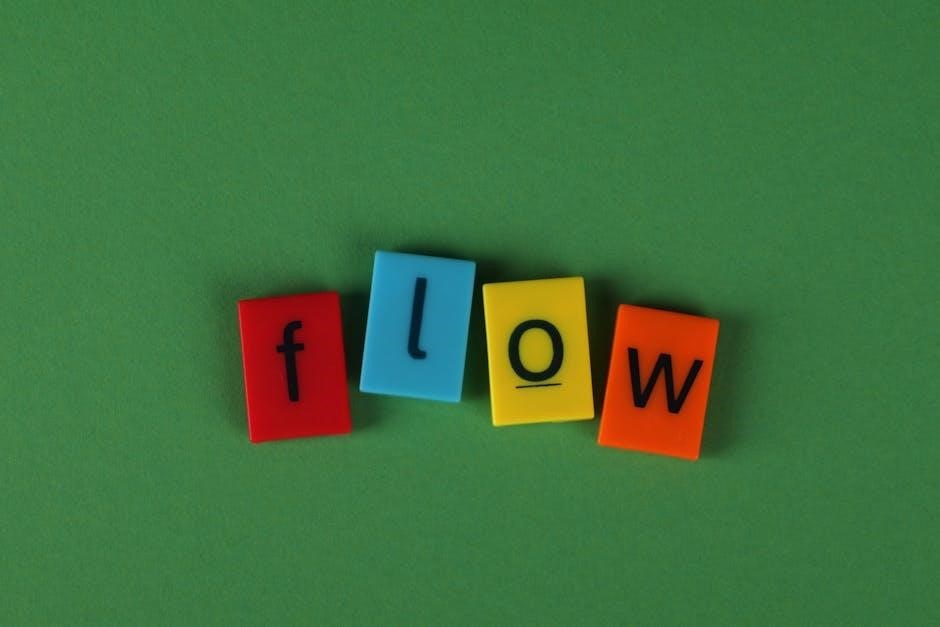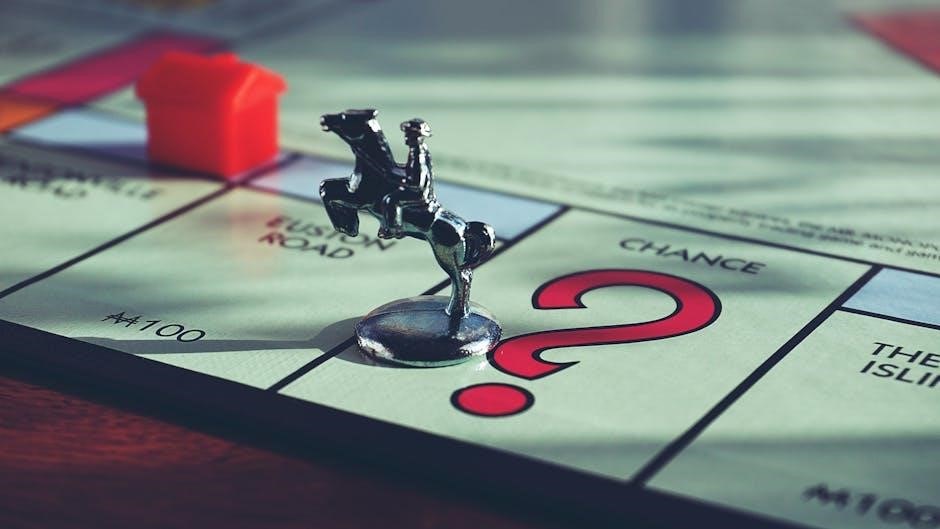The concept of “sonar un crimen” explores the psychological and literary connections between dreams and criminal behavior, as seen in works like Dostoevsky’s Crime and Punishment. English-language PDF resources delve into Freudian analysis, the American Dream’s influence on crime, and legal perspectives, offering comprehensive insights into this fascinating intersection.
1.1. Understanding the Concept of “Sonar un Crimen”
The concept of “sonar un crimen” refers to the psychological and symbolic connection between dreams and criminal acts. It explores how subconscious thoughts, revealed through dreams, may influence or reflect criminal behavior. This idea is deeply rooted in literary and psychological analysis, particularly in works like Dostoevsky’s Crime and Punishment, where dreams serve as a window into the protagonist’s guilt and motivations. English-language PDF resources, such as Freudian analyses, further examine how dreams can uncover hidden desires and conflicts, shedding light on the intricate relationship between the subconscious mind and criminal actions.
1.2. Relevance of the Topic in English-Language Resources
The topic of “sonar un crimen” gains significant relevance in English-language resources, particularly in literary and psychological studies. numerous PDF materials, such as eBooks and academic articles, explore the connection between dreams and criminal behavior. Works like Dostoevsky’s Crime and Punishment and Freudian analyses are prominently featured, offering insights into the subconscious mind’s role in crime. Additionally, resources examining the American Dream’s influence on criminal acts highlight the broader societal implications. These English-language materials provide a rich foundation for understanding the psychological and literary dimensions of “sonar un crimen,” making them invaluable for scholars and enthusiasts alike.
1.3. Overview of Available PDF Materials
A wealth of PDF materials explores the intersection of dreams and crime in English. Key resources include Fyodor Dostoevsky’s Crime and Punishment, translated by Constance Garnett, and Freudian analyses of dream content. Specific PDFs like “Born a Crime” by Trevor Noah and “A BAD DREAM” offer unique perspectives on criminal behavior and subconscious influences. Academic articles, such as those discussing the continuity hypothesis and legal frameworks, provide deeper insights. These materials are accessible through platforms like Planet PDF, ResearchGate, and academic databases, making them invaluable for researchers and enthusiasts exploring the psychological and literary dimensions of “sonar un crimen.”

The Psychological and Literary Context
Dostoevsky’s works reveal psychological depths through dreams, while Freudian theory links subconscious thoughts to criminal acts, and the American Dream’s pursuit often fuels ambition-driven crimes.
2.1. The Role of Dreams in Crime and Punishment
Dreams in Crime and Punishment serve as a window into the characters’ subconscious, revealing their inner turmoil and guilt. Raskolnikov’s dreams, such as the one involving Mikolka’s horse, symbolize his deep-seated conscience and psychological conflict. These dream sequences not only foreshadow events but also reflect the characters’ moral struggles. Freudian analysis suggests that dreams uncover repressed desires and fears, linking them to criminal behavior. Dostoevsky skillfully uses these narratives to explore the psychological motivations behind crimes, making dreams a critical literary device in understanding the protagonist’s descent into darkness and eventual redemption. This technique remains a cornerstone of psychological and literary analysis in the novel.
2.2. Dostoevsky’s Use of Dreams as a Literary Device
Dostoevsky employs dreams in Crime and Punishment to delve into the subconscious, revealing characters’ hidden fears, desires, and moral dilemmas. Raskolnikov’s haunting dream about Mikolka’s horse, for instance, symbolizes his guilt and inner turmoil, foreshadowing the consequences of his actions. Dreams serve as a narrative tool to explore psychological complexity, blurring the line between reality and the subconscious. This technique not only enhances the novel’s depth but also provides insight into the motivations behind criminal behavior, making it a pivotal element in understanding the protagonist’s journey from sin to redemption. Dostoevsky’s mastery of this literary device remains unparalleled in exploring human psychology.
2.3. The American Dream and Its Connection to Crime
The American Dream, symbolizing success and prosperity, often influences criminal behavior when individuals feel denied access to its promises. This perceived exclusion can fuel frustration, driving some to engage in illegal activities to achieve their goals. The pressure to succeed, coupled with systemic inequalities, creates a volatile environment where crime becomes a means to attain the elusive Dream. Societies that strongly believe in the American Dream often implement harsher punishments, reflecting a paradox where the pursuit of prosperity exacerbates both crime and its consequences. This duality highlights the complex interplay between aspirations and criminality in the context of the American Dream.

Key Themes in “Crime and Punishment”
The novel explores themes of guilt, redemption, and psychological turmoil, with symbolic elements like Mikolka’s horse reflecting Raskolnikov’s inner conflict and the consequences of crime.
3.1. Raskolnikov’s Inner Conflict and Dreams
Raskolnikov’s inner turmoil is central to Crime and Punishment, as his dreams reveal his psychological struggle. The recurring dream of Mikolka’s horse symbolizes his guilt and moral decay, while other visions reflect his subconscious grappling with sin and redemption. Freudian analysis suggests these dreams expose his repressed emotions and internalized conflict between rationality and morality. Dostoevsky uses these sequences to foreshadow events and illuminate Raskolnikov’s mental state, showcasing how his psyche deteriorates under the weight of his actions. The dreams serve as a window into his soul, highlighting the devastating consequences of his crime and his eventual journey toward atonement.
3.2. The Symbolism of Mikolka’s Horse in Dreams

Mikolka’s horse in Raskolnikov’s dreams symbolizes innocence and suffering, reflecting his guilt over the crime. The horse’s brutal death in the dream mirrors Raskolnikov’s inner turmoil, representing the destruction of innocence and moral decay. This imagery serves as a manifestation of his subconscious remorse and fear of punishment. Freudian analysis suggests the horse embodies Raskolnikov’s repressed emotions, while its death signifies the consequences of his actions. The dream also underscores themes of societal oppression, as the horse’s suffering parallels the plight of the downtrodden in St. Petersburg. Through this symbolism, Dostoevsky highlights Raskolnikov’s psychological struggle and the devastating moral implications of his crime.
3.3. The Impact of Guilt and Redemption
Raskolnikov’s guilt over the murder drives his psychological turmoil, as seen in his dreams and interactions with others. Sonia’s unwavering faith and compassion guide him toward redemption, symbolizing the power of moral reconciliation. The novel highlights how guilt can consume an individual, leading to self-punishment and emotional despair. Redemption, however, offers a path to healing, as Raskolnikov eventually confesses and accepts punishment. This journey underscores the interplay between crime, guilt, and the possibility of moral salvation. Dostoevsky’s portrayal emphasizes the transformative power of redemption, not only for Raskolnikov but also for society, addressing deeper themes of justice and forgiveness.

The American Dream and Crime
The American Dream’s promise of success and prosperity often fuels criminal behavior when unattainable, as individuals resort to illegal acts to achieve their aspirations, highlighting its complex influence.
4.1. How the American Dream Influences Criminal Behavior
The American Dream’s illusion of attainable success often drives individuals to criminal acts when faced with systemic barriers like poverty and inequality. The pressure to achieve prosperity can lead to desperation, where crime becomes a means to bridge the gap between aspiration and reality. Societal emphasis on material success exacerbates this, as individuals may resort to illegal activities to attain status. This phenomenon is explored in literature, with works like Crime and Punishment highlighting the psychological toll of unmet expectations. The Dream’s promise, while inspiring, can thus perpetuate a cycle of disillusionment and criminal behavior in pursuit of its ideals.
4.2. The Role of Social Class in Shaping Criminal Acts
Social class significantly influences criminal behavior, as economic disparities limit opportunities and foster desperation. In Crime and Punishment, Raskolnikov’s poverty drives his ideological justification for murder, reflecting how societal stratification can lead to extreme actions. The American Dream’s emphasis on upward mobility exacerbates tensions, as those in lower classes may resort to crime to escape their circumstances. Research indicates that regions with greater income inequality experience higher crime rates, underscoring the connection between economic status and criminal acts. Thus, social class emerges as a critical factor in shaping criminal behavior, intertwined with broader societal structures and individual desperation.

Dreams as a Reflection of the Subconscious
Dreams reveal the subconscious mind’s hidden desires, fears, and unresolved conflicts, offering insights into human psychology. Freudian theory links dreams to repressed thoughts, while the continuity hypothesis suggests they mirror waking-life emotions and experiences, providing a window into criminal motivations and behaviors.
5.1. Freudian Analysis of Dreams in Criminal Contexts
Freudian theory posits that dreams are manifestations of the subconscious, revealing repressed desires, conflicts, and unresolved psychological issues. In criminal contexts, this analysis suggests that dreams may symbolize latent criminal tendencies or unresolved guilt. Freud’s concepts of the id, ego, and superego can explain how repressed impulses might surface in dreams, potentially influencing criminal behavior. For instance, in Crime and Punishment, Raskolnikov’s dreams reflect his internal moral struggle, aligning with Freud’s idea of the subconscious mind grappling with societal norms. This psychological framework provides a deeper understanding of how dreams might predict or mirror criminal acts, offering insights into motivation and guilt.
5.2. The Continuity Hypothesis in Dream Content
The continuity hypothesis suggests that dream content reflects waking-life thoughts, emotions, and experiences. In criminal contexts, this implies that dreams may mirror unresolved issues or stressors related to criminal behavior. Research indicates that individuals involved in criminal activities often experience dreams tied to guilt, fear, or replays of past events. This hypothesis supports the idea that analyzing dream content could provide insights into criminal psychology. By examining recurring themes in dreams, professionals can better understand motivations, emotional states, and potential triggers for criminal acts, offering a unique lens for profiling and behavioral analysis in legal and psychological frameworks.

Legal and Criminological Perspectives
Legal frameworks and criminological theories examine how criminal behavior is influenced by psychological factors, including dreams. The American Dream’s pursuit often ties to crime motivations, shaping legal responses and punishment strategies.
6.1. The Role of Criminal Law in Understanding Dreams
Criminal law examines how subconscious elements, such as dreams, may influence criminal behavior, offering insights into motivations and psychological states. While dreams are not direct evidence, they can provide context in legal evaluations. The American Dream’s pursuit often correlates with criminal acts, as individuals may resort to illegal means to achieve societal expectations. Legal systems incorporate psychological assessments to understand offenders’ mental frameworks, potentially linking dream content to criminal intent. This intersection of psychology and law highlights how Dreams can indirectly shape legal outcomes, aiding in profiling and rehabilitation strategies.
6.2. Punishment and Rehabilitation in the Context of Dreams
Dreams play a significant role in understanding the psychological aspects of criminal behavior, influencing both punishment and rehabilitation strategies. Freudian analysis highlights how unconscious thoughts, revealed through dreams, can shape criminal actions. Legal systems increasingly consider psychological evaluations, including dream content, to assess intent and culpability. Rehabilitation programs often focus on addressing underlying mental conflicts, as seen in Raskolnikov’s inner turmoil, aiming to prevent recidivism. By analyzing recurring nightmares, experts can identify unresolved guilt or trauma, aiding in tailored rehabilitation approaches. This integration of psychological insights into criminal justice systems reflects a modern approach to understanding and addressing criminal behavior through subconscious exploration.

Resources and References
Extensive PDF materials, including Freudian analyses and Dostoevsky’s works, provide insights into the psychological and literary connections between dreams and crime. Academic sources offer further reading.
7.1. Recommended PDFs on the Topic
Several PDF resources offer in-depth analysis of the connection between dreams and crime. Crime and Punishment by Fyodor Dostoevsky, translated by Constance Garnett, is available via Planet PDF. Freudian dream analysis is explored in works discussing the continuity hypothesis and its link to criminal acts. The American Dream’s influence on crime is detailed in academic sources like “The Role of Criminal Law in Understanding Dreams.” Additionally, specific analyses, such as Abe Layman’s study of dream sequences in Crime and Punishment, provide valuable insights. These PDF materials are accessible on platforms like ResearchGate and academic databases, offering comprehensive reading for researchers.
7.2. Academic Sources for Further Reading

For deeper exploration, academic sources like “Dream Content, Nightmares, Criminal Acts” and “The Role of Criminal Law in Understanding Dreams” provide detailed insights. Freudian theories on dream analysis are explored in works discussing the continuity hypothesis. The American Dream’s connection to crime is examined in studies like “The English Dream and Its Impact on Criminal Behavior.” Peer-reviewed articles by authors such as Bottoms et al. and Robin E. Sheriff offer expert perspectives. These sources are available on platforms like ResearchGate and academic databases, ensuring access to high-quality, evidence-based research for scholars and enthusiasts alike.
The intersection of dreams and crime, explored through Freudian analysis and literary works like Crime and Punishment, reveals profound psychological and societal connections, shaping our understanding of human behavior.
8.1. Summary of Key Points
The analysis of “sonar un crimen” reveals deep connections between dreams, psychology, and criminal behavior, as explored in works like Crime and Punishment. Freudian theories highlight how dreams reflect the subconscious, potentially influencing criminal acts. The American Dream’s pursuit often drives illegal actions, shaped by social class disparities. Literary devices, such as Raskolnikov’s dreams, symbolize guilt and redemption, while legal perspectives examine punishment’s role in rehabilitation. The continuity hypothesis links dream content to waking behavior, offering insights into criminal motivations. These themes underscore the complex interplay between psychological, societal, and literary factors in understanding crime and human behavior.
8.2. Final Thoughts on the Intersection of Dreams and Crime

The intersection of dreams and crime offers a fascinating glimpse into human psychology and behavior. Through works like Crime and Punishment, Dostoevsky illustrates how dreams reveal inner turmoil and foreshadow criminal acts. Freudian analysis further connects subconscious desires to illegal behavior, while the American Dream paradoxically inspires both ambition and crime. Social class and inequality amplify these dynamics, as seen in literary and real-world contexts. By exploring these themes, we gain a deeper understanding of how dreams reflect and shape human actions, bridging psychology, literature, and law to uncover the complexities of crime and redemption.
